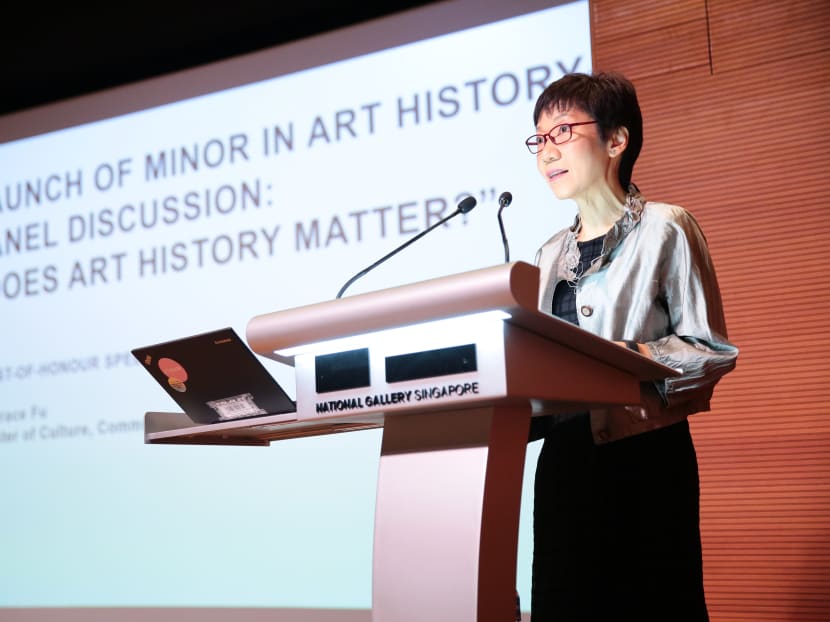NUS launches minor in art history in collaboration with National Gallery
SINGAPORE — The National University of Singapore (NUS) Faculty of Arts and Social Sciences and the National Gallery Singapore have collaborated to introduce a new Minor in Art History programme for NUS students across all disciplines and schools.

Ms Grace Fu, Minister for Culture, Community and Youth, launched a new Minor in Art History programme at the National University of Singapore (NUS). The programme is jointly offered by NUS and National Gallery Singapore. Photo: National University of Singapore
SINGAPORE — The National University of Singapore (NUS) Faculty of Arts and Social Sciences and the National Gallery Singapore have collaborated to introduce a new Minor in Art History programme for NUS students across all disciplines and schools.
Students in the programme will be offered opportunities for on-the-job training through internships with the Gallery, equipping “our future arts practitioners with the knowledge and practical skills to be relevant to the sector”, said Ms Grace Fu, Minister for Culture, Community and Youth, who launched the programme on Saturday (April 8) at the National Gallery Singapore.
“We need more arts practitioners to grow and sustain the capabilities our art and cultural institutions. Hence, we welcome programmes like the Minor in Art History, which provide additional pathways for young Singaporeans to pursue arts-related careers,” Ms Fu said.
“As we build our arts ecosystem, we need to acquire knowledge in art history, particularly of Singapore and South-east Asian art, as well as content development.”
With a few modules already introduced to students in January this year, she added that students in the course will benefit from the experience of existing art practitioners, as curators from the Gallery will be “sharing their time, expertise, and passion for the arts with students as lecturers and supervisors in the programme”. Topics covered include behind-the-scenes insights in curating exhibitions, and learning about what went into the making of the National Gallery, and some classes will be conducted within museum galleries.
Eighty-seven students are currently enrolled in the programme's compulsory Introduction to Art History. A total of 28 modules will be offered, and out of those, eight have been developed by NUS and National Gallery specifically for the course.
According to associate professor Valerie Wee, vice dean of undergraduate studies at the NUS Faculty of Arts and Social Sciences, a major in art history could be in the works. The minor is a good way to “test the waters”, she said, and if there is “sustained interest, we will certainly be exploring whether we can turn it into a major”.
Programmes such as the Minor in Art History will be important in shaping the future, and will have an impact on how Singapore’s cultural institutions will display and communicate work, said Ms Fu. She noted that the NUS faculty made an effort to place the programme’s curriculum “within the local and regional context”.
During his welcome address, Dr Eugene Tan, director of the National Gallery, noted that art history highlights the important roles that art and artists and have played in society through history and also “the potential art has, as an agency of change, in our societies”.
Ms Wang Yiming is a third-year political science major, who has chosen to minor in art history. The 21-year-old would have gone for an arts major, had it been available, but finds connections between political science and art history.
“Political science gives me context to understanding trends, and learning about world affairs,” she said. “The relationship between politics and art is always there, although it is not always seen … Art is mirror of society, and it’s so powerful because you can wield it as a narrative device.”
The event launch preceded a panel discussion titled Does Art History Matter? A panel of speakers including Aimee Lin, co-founder and editor of Art Review Asia; Mami Kataoka, chief curator of the Mori Art Museum; and Tan Guo-Liang, an artist and educator. They discussed the application of art history and its pitfalls and potentials in Asia.






